 Today, we’ve got a roundup of the latest payments industry news, new developments and insight from markets around the world. Yesterday’s proposed 20% tariff on Mexican products to pay for Trump’s wall had analysts urging caution at the President’s plan. Enough that the White House later backtracked and said it was just one option under consideration. The Tax Policy Center said the tariff would raise costs and in effect taxpayers would pay for the wall. Mexican Foreign Relations Secretary Luis Videgaray echoed the statement.
Today, we’ve got a roundup of the latest payments industry news, new developments and insight from markets around the world. Yesterday’s proposed 20% tariff on Mexican products to pay for Trump’s wall had analysts urging caution at the President’s plan. Enough that the White House later backtracked and said it was just one option under consideration. The Tax Policy Center said the tariff would raise costs and in effect taxpayers would pay for the wall. Mexican Foreign Relations Secretary Luis Videgaray echoed the statement.
Fintech companies raised more than $36 billion in financing across over 1500 funding deals around the world according to a report by Financial Technology Partners. Watch for innovations in wearables payments, virtual reality, in-video payments, biometrics and more. In Japan, Starbucks and Beams launched a contactless, high fashion keychain payment device.

Singapore residents can now pay with contactless payment wearables, thanks to EZ-Link, Watchdata Technologies and Garmin. Forget fingerprints, you may soon be able to pay with a heartbeat according to a report in readwrite.com. Later this year, Target will introduce its own in-store mobile payment program. Alibaba’s Ant Financial Services Group will buy MoneyGram in an $880 million deal.
Andrea Riley, CMO of Ally Financial predicts car buyers will soon take cars for a virtual test drive and buy their vehicle online without going out on the road. The Indian payments industry hopes to break the banks’ monopoly on installing debit and credit card payment devices. Banks, fintech and payments companies lobbied the Indian government for a range of regulations and policies to open up competition and yet protect other industry positions. One thing for sure — India is on a fast track to biometrics payments.
Beer, snacks and cars: How a 20% Mexico tariff could cost US shoppers
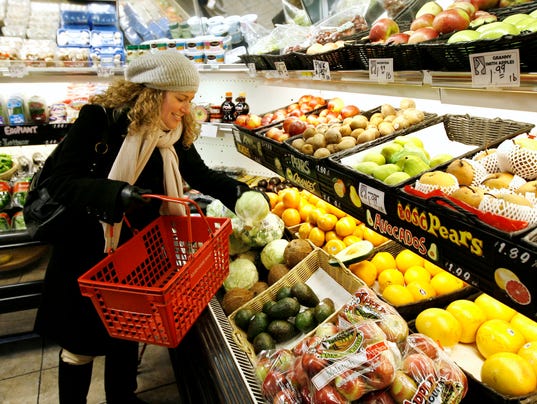 President Trump announced a plan to levy a 20% tax on all imports from Mexico. Overall, U.S. imports from its southern neighbor peaked at $316.4 billion that year. That’s in contrast to Mexican-bound exports from the U.S. that amounted to $267.2 billion.
President Trump announced a plan to levy a 20% tax on all imports from Mexico. Overall, U.S. imports from its southern neighbor peaked at $316.4 billion that year. That’s in contrast to Mexican-bound exports from the U.S. that amounted to $267.2 billion.
Trump raised the idea of the new tax as a possible way to finance a wall that would straddle the border separating the U.S. from Mexico, currently its third largest partner in the trade of goods, according to the U.S. Trade Representative.
William Gale, co-director of the Tax Policy Center, that while a stronger dollar could minimize the pain U.S. shoppers feel, “the irony of putting a tariff on Mexican goods is that, to the extent it raises consumer prices in the U.S., consumers will be paying for the wall, not Mexican producers.’’ Via usatoday.com
Trump proposes 20 percent tax on Mexican imports to pay for border wall
Determined to wall off America’s border with Mexico, President Donald Trump triggered a diplomatic clash and a fresh fight over trade Thursday as the White House proposed a 20 percent tax on imports from the key U.S. ally and Mexican President Enrique Pena Nieto abruptly scrapped next week’s trip to Washington.
The swift fallout signaled a remarkable souring of relations between Washington and one of its most important international partners just days into the new administration. The U.S. and Mexico conduct some $1.6 billion a day in cross-border trade, and cooperate on everything from migration to anti-drug enforcement to major environmental issues.
Mexican Foreign Relations Secretary Luis Videgaray said Thursday, “A tax on Mexican imports to the United States is not a way to make Mexico pay for the wall, but a way to make the North American consumer pay for it through more expensive avocados, washing machines, televisions.” Via chicagotribune.com
Devices and Unconventional Channels Are Turning Into Payments Platforms
 The payments segment was the hottest FinTech segment in 2016 – financial technology companies around the world raised a total of ~$36 billion in financing across over 1500 funding deals from over 1700 unique investors (not taking into account M&A deals). Representing less than a quarter (22%) of the funded pool, the Payments/Loyalty/E-Commerce segment secured almost 40% (over $13.5 billion) of total funds raised, while, with 29% of representation, Banking/Lending companies are responsible for just 26% ($9.3 billion) of raised funds.
The payments segment was the hottest FinTech segment in 2016 – financial technology companies around the world raised a total of ~$36 billion in financing across over 1500 funding deals from over 1700 unique investors (not taking into account M&A deals). Representing less than a quarter (22%) of the funded pool, the Payments/Loyalty/E-Commerce segment secured almost 40% (over $13.5 billion) of total funds raised, while, with 29% of representation, Banking/Lending companies are responsible for just 26% ($9.3 billion) of raised funds.
With payments being at the center of attention, no wonder companies across industries are looking for ways to integrate payments capabilities into as many devices/platforms and channels as possible. VR
Such a massive expansion of the industry wouldn’t be possible without a sizable adoption of contactless payments. Contactless payments are expected to grow from $35 billion in 2015 to $95 billion in 2018. Given that contactless payments are here to stay and grow, wearables are the perfect and logical outlet to embed them. In fact, wearable payments are expected to overtake plastic cards in 5–7 year’s time. Some forecasts suggest that wearable payment transaction volume will grow from $3.1 billion in 2015 to $501.1 billion worldwide by 2020. And by that time, wearable payments will represent approximately 20% of the total mobile proximity transaction volume and about 1% of total cashless transactions in retail. Social media Via letstalkpayments.com
Starbucks teams up with Japanese clothing brand to create new contactless payment system
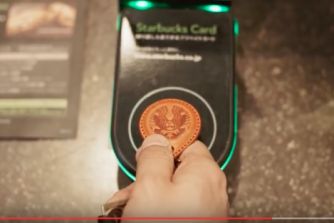 They can’t get enough of the limited-edition beverages on offer, and when it comes to merchandise, customers here have been known to wipe the shelves clean of Japanese-exclusive drinkware and goods as soon as they appear in-store. Now there’s another limited-edition exclusive that Starbucks lovers are scrambling to get their hands on, and this time it comes in the form of a small leather keychain.
They can’t get enough of the limited-edition beverages on offer, and when it comes to merchandise, customers here have been known to wipe the shelves clean of Japanese-exclusive drinkware and goods as soon as they appear in-store. Now there’s another limited-edition exclusive that Starbucks lovers are scrambling to get their hands on, and this time it comes in the form of a small leather keychain.
The new keychain works the same way as the touch-and-pay system involving pre-bought Starbucks cards and top-up “mobile cards” on smartphones, which are currently used in conjunction with the existing electronic readers.
Each keychain is crafted in the shape of a coffee drop, just like the ones you’d find in the making of a drip coffee. The colour palette has also been carefully thought out, with green and orange representing the corporate colours of Starbucks and Beams respectively, while black symbolises coffee, white symbolises milk, and brown recalls the image of a freshly made latte. Via japantoday.com
EZ-Link provides easier payments systems in Singapore
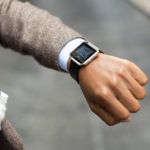 Residents of Singapore now have the option of contactless payment wearables, thanks to the collaboration between EZ-Link, Watchdata Technologies and Garmin. In late January, two contactless payment options were introduced.
Residents of Singapore now have the option of contactless payment wearables, thanks to the collaboration between EZ-Link, Watchdata Technologies and Garmin. In late January, two contactless payment options were introduced.
“This collaboration with EZ-Link puts Singapore on the road map as the first country in South-east Asia to offer a contactless payment solution where you can pay for public transport rides with a tap of your wearable on your wrist. Integrating the latest smarts, such as innovative payment solutions, into our wearable devices is one of the key pillars of our ongoing efforts to help consumers experience new ways of convenience in their daily life,” says Al Sundoro, General Manager, Garmin South Asia.
Commuters can use the Batman v Superman Fitness Tracker X EZ-Link and Garmin vivosmart HR with EZ-Link smartwatch to pay for their regular commutes on public trains and buses. The devices utilize the EZ-link CEPAS purse for contactless payment on public transport and at over 30,000 EZ-link acceptance areas throughout the island. Via readwrite.com
Forget fingerprints, soon you may be able to sign-in with your heartbeat
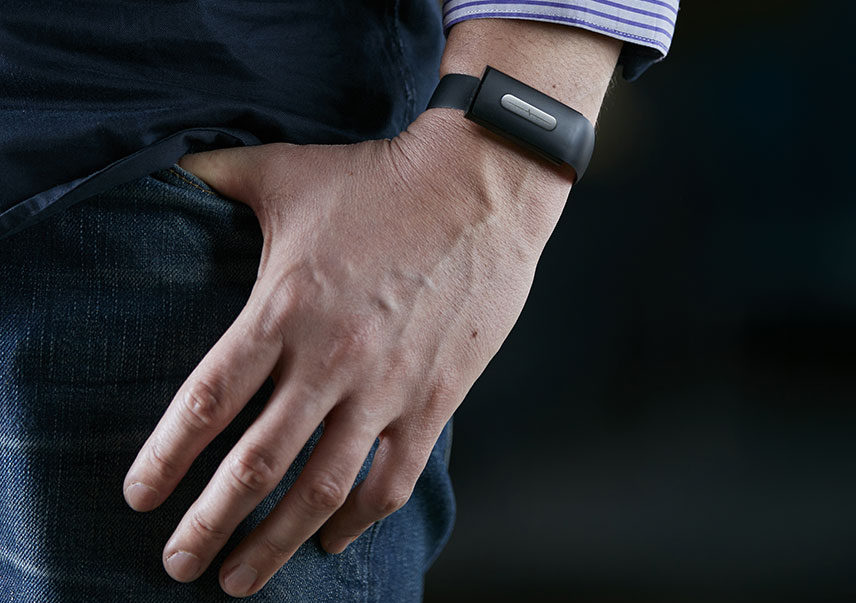 The search for the most complex and unique sign-in method continues and at Birmingham State University in New York, a team of researchers are looking into utilizing the heartbeat. Most wearable devices already track heart-rate, so from there the device only needs to convert the beat into a unique biometric key.
The search for the most complex and unique sign-in method continues and at Birmingham State University in New York, a team of researchers are looking into utilizing the heartbeat. Most wearable devices already track heart-rate, so from there the device only needs to convert the beat into a unique biometric key.
The key could be used to unlock smartphones, log-in to social networks, and even be a smart fob for doors and lockers in high security areas. Deployment could be tied into a wellness program, which many companies are now embracing.
The benefits of heartbeat authentication is it even more unique than a fingerprint, although humans do tend to experience irregularities if nervous or tired, something that could interfere with the authentication process. Another potential benefit is battery life, as it requires less energy to process a heartbeat on a wearable than to go through layers of encryption, according to Zhanpeng Jin, co-author of the report. Via readwrite.com
Target plans to introduce its own smartphone payment service in stores later this year
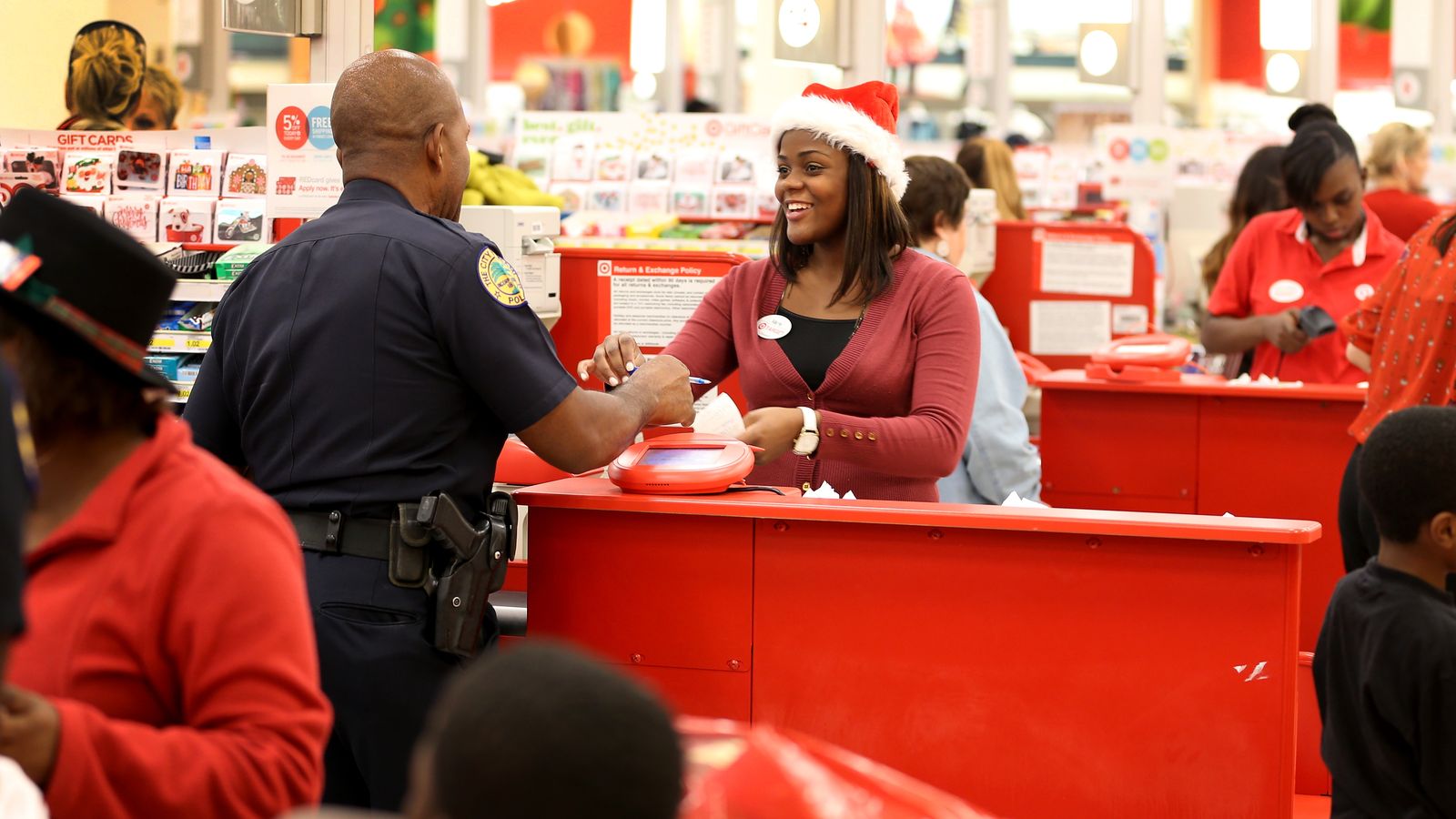 Shoppers will be able to use their phones to pay in Target stores later this year, but it won’t necessarily be with Apple Pay or Android Pay. It’s not clear if Target will add the payment feature to its main Target app, its popular Cartwheel coupon app or both.
Shoppers will be able to use their phones to pay in Target stores later this year, but it won’t necessarily be with Apple Pay or Android Pay. It’s not clear if Target will add the payment feature to its main Target app, its popular Cartwheel coupon app or both.
Target will be following in the footsteps of other big retailers like Walmart and Kohl’s who have added mobile payment features to their own apps over the last year, in the wake of offerings from Apple, Google and Samsung.
In the case of Kohl’s service, Kohl’s Pay, shoppers can use the app to both pay and earn rewards points with a single scan at checkout. McNamara said it would make sense for Target to offer store shoppers a way to both pay and use a digital coupon in one step. Via recode.net
Alibaba affiliate Ant Financial to buy MoneyGram
Ant Financial Services Group, the payment affiliate of Chinese e-commerce firm Alibaba Group Holding Ltd (BABA.N), said it would buy U.S. money-transfer company MoneyGram International Inc (MGI.O) in a deal valued at about $880 million.
Ant Financial’s Alipay payment platform dominates the online payments industry in China and is looking to expand its presence overseas as competition from Tencent Holdings Ltd’s (0700.HK) Wechat payment system heats up at home.
This would be Ant Financial’s second acquisition in the United States. Last year, the company bought EyeVerify, a maker of optical verification technology used by U.S. banks. Via reuters.com
Virtual test drives for cars could let you buy your car 100% online
 We sat down with Andrea Riley, CMO of Ally Financial, to discuss how being a 100% digital financial company, with no physical retail locations, changes how she thinks about and supports customers.
We sat down with Andrea Riley, CMO of Ally Financial, to discuss how being a 100% digital financial company, with no physical retail locations, changes how she thinks about and supports customers.
Ally Financial is the financial services company once known as GMAC, which spun off from GM in 2006, and is best known for its car financing options. One interesting statistic Riley shared with us is how the car buying process is going digital, creating some interesting challenges for Ally.
One interesting statistic Riley shared with us is how the car buying process is going digital, creating some interesting challenges for Ally. Ally also spent the last year greatly expanding its portfolio of financial services. Via businessinsider.com
Payment companies seek to crack banks’ monopoly on card use
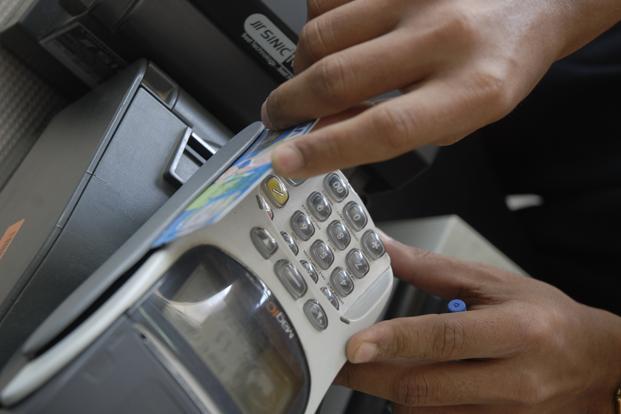 New Delhi: India’s rapidly growing payment industry is seeking easier entry norms for non-banking entities to install credit and debit card swiping machines at merchant outlets that will foster competition and cut down user charges, a goal the government is pursuing to tide over the cash crunch induced by recall of high-value currency notes.
New Delhi: India’s rapidly growing payment industry is seeking easier entry norms for non-banking entities to install credit and debit card swiping machines at merchant outlets that will foster competition and cut down user charges, a goal the government is pursuing to tide over the cash crunch induced by recall of high-value currency notes.
Executives, however, cautioned that any artificial reduction of merchant discount rate (MDR) on credit and debit cards payment through legislation will not work as it will affect the cost-benefit balance of issuing swiping machines.
The chief ministers’ panel on digital payments led by Andhra Pradesh chief minister Chandrababu Naidu had on Tuesday disapproved of MDR levy by card issuers and recommended to Prime Minister Narendra Modi to lower or eliminate MDR for all digital payments to government entities. The panel also recommended that Aadhaar-enabled payment systems which rely on biometrics should be incentivized rather than discouraged by charging MDR. Via livemint.com
Lower MDR will kill the digital payments industry: Banks
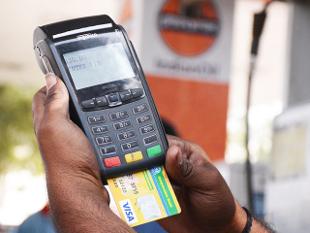 Digital payment gateways and makers of credit and debit card readers are resisting a government panel’s recommendations to slash the fees merchants have to pay banks on card transactions.
Digital payment gateways and makers of credit and debit card readers are resisting a government panel’s recommendations to slash the fees merchants have to pay banks on card transactions.
A week ahead of the Union Budget, a committee of chief ministers led by Andhra Pradesh’s Chandrababu Naidu has suggested abolishing the merchant discount rate (MDR) for digital payments made to government entities. In its report submitted to Prime Minister Narendra Modi on Tuesday, the committee also pressed for the Reserve Bank of India to operationalize its recommendations made in December to “substantially lower” the rate.
These were a part of other recommendations the panel made towards encouraging digital transactions and disincentivising cash payments. Its suggestions on MDR, however, disagree with that of the recently released Ratan Watal committee report that warns about potential pitfalls in imposing regulatory limits or keeping the fee too low. Via economictimes.indiatimes.com
Enjoy your weekend and we’ll be back with fresh PaymentsNEXT news on Monday.








LET’S CONNECT